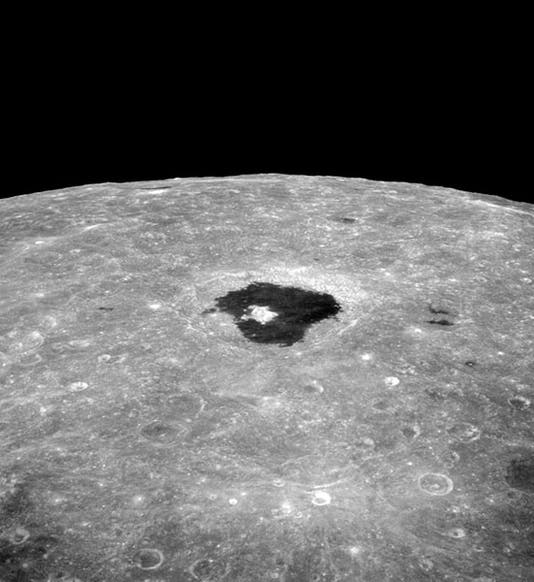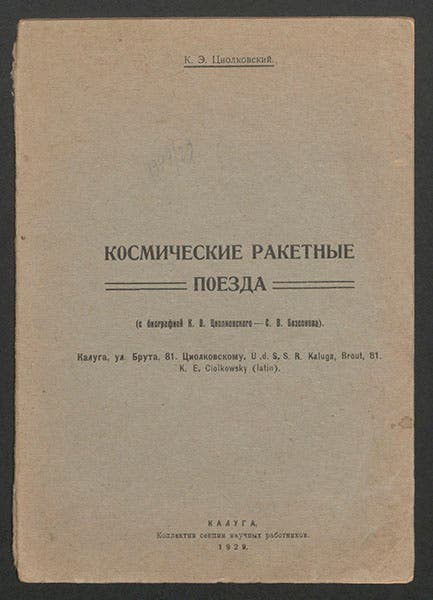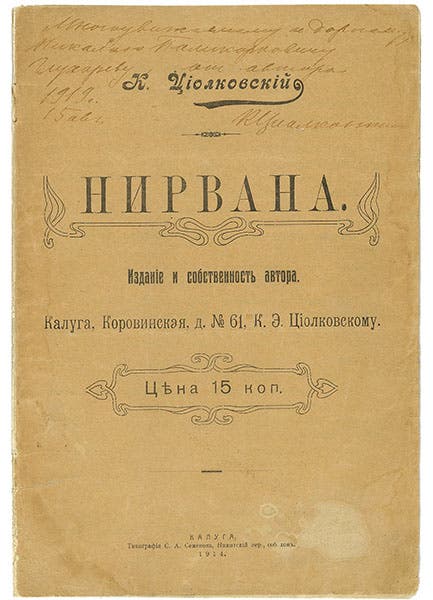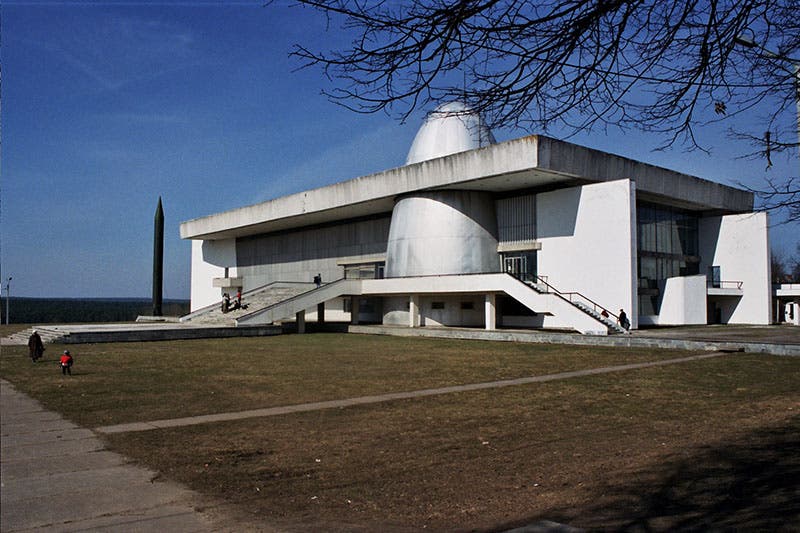Scientist of the Day - Konstantin Tsiolkovskii
Konstantin Tsiolkovskii, a Russian rocket pioneer, was born Sep. 17, 1857. Tsiolkovskii (formerly transliterated Tsiolkovsky) spent much of his life as a schoolteacher in the provincial city of Kaluga, about 90 miles from Moscow, but he read physics and mathematics from his earliest days, and, inspired by Jules Verne, he was one of the first to take a serious look at the obstacles facing those who would rocket into space. He considered the problem of combustion, wondering how fuel could be enabled to burn in space, and he concluded that a rocket might burn a fuel like hydrogen, if it were provided with liquid oxygen as the oxidizer. He proposed that an efficient rocket would have a separate combustion chamber, with pumps to move fuel to the burner, and an ignition system. He also developed equations that allowed one to determine the optimum ratios of propellant to spacecraft. This was quite an improvement over the conventional idea that you could just stuff gunpowder into a rocket and light it up, and off the rocket would go.
Tsiolkovsky was also one of four rocket pioneers who independently conceived of the multi-stage rocket, with a large first stage to escape most of the earth's gravitational pull, and smaller second and third stages to go on to the Moon or Mars. The Library recently acquired his Kosmicheskie raketnye poezda (Space Rocket Trains, 1929, third image), where Tsiolkovsky discussed his ideas for a multi-stage rocket. The title indicates that Tsiolkovsky envisioned his rocket traveling along the ground for some distance and gathering speed, before veering upwards into the atmosphere and igniting the upper stages. For the next six weeks, our recent acquisition can be viewed as part of our current exhibition, To the Moon: The Science of Apollo.
Tsiolkovsky published papers on space flight throughout his entire life (along with a considerable body of science fiction), but no one really noticed until the Russian revolution of 1919, after which he became a national hero and was appointed to the Soviet Academy of Sciences. In 1935, on May Day, he was invited to give a speech that was taped in Kaluga and then broadcast at Red Square and throughout the USSR – this was just shortly before his death. He became an icon to the upcoming generation of Soviet rocket scientists, such as Sergei Korolev, who helped launch Sputnik and Yuri Gagarin into space. When the Soviets in 1959 took a single grainy photograph of the back side of the moon, and thus earned the privilege of naming all the features shown in the photograph, they reserved the finest far-side crater for Tsiolkovsky. It is, indeed, the grandest sight on the moon, front or back. We see here a detail of the original photograph (fourth image), as published in 1959 – Tsiolkovskii is the crater with an inner peak at lower right – and a more recent view from the Apollo 8 command module (first image).

First photograph of the far side of the Moon, detail, showing the crater with central peakmat bottom right that will be named Tsiolkovsky (Linda Hall Library)
The Russian Academy of Sciences has an abundance of photographs of Tsiolkovskii engaged in various activities in and around his workshop in Kaluga, but none of these seem to have found their way onto the web. However, many of them are reproduced in an excellent recent biography, Red Cosmos: K.E. Tsiolkovskii, Grandfather of Soviet Rocketry, by James T. Andrews (2009).
Our portrait comes from a short-lived German journal on rockets, Die Rakete (1927-29). Hermann Oberth, the German rocket pioneer, discovered Tsiolkovskii’s mathematical work in 1928 and promptly paid him homage with a photograph (second image)
Our fellow institution in Hutchinson, Kansas, the Cosmosphere, which displays an outstanding collection of Soviet rocketry materials, has several Tsiolkovskii items, including a copy of his Nirvana (1914) which has a presentation inscription by Tsiolkovskii himself on the front cover (fifth image). If you would like to see more Tsiolkovskii artifacts, you might try the impressive-looking Konstantin E. Tsiolkovsky State Museum of the History of Cosmonautics, in his home city of Kaluga (sixth image).
Dr. William B. Ashworth, Jr., Consultant for the History of Science, Linda Hall Library and Associate Professor emeritus, Department of History, University of Missouri-Kansas City. Comments or corrections are welcome; please direct to ashworthw@umkc.edu.










